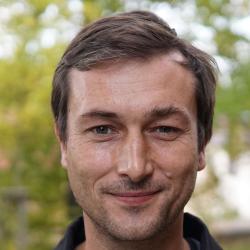The 2020 PATA Days in Chile, originally planned for November this year, had to be postponed to November 2021. Let’s keep the enthusiasm for the realization of this nice congress in the coastal Atacama Desert of northern Chile! On 18 December, 2020 there will be a webinar including lectures on paleoseismology and seismic hazard, as well as an introduction to recent advances in active tectonics along the major northern Chile seismic gap. In addition, the first short-abstract volume in digital version will be released.
more-
Announcement: PATA Days Webinar on 18 Dec, 2020
2020-11-26 | in PATA days -
Special issues on earthquakes & active tectonics
-
New papers on paleoseismology, earthquakes, and active tectonics (Nov 2020)
2020-11-02 | in PaperSince field work is not possible for many of us right now, it’s possibly a good idea to catch up with the latest literature on paleoseismology, active tectonics, and earthquake geology. This time there are many studies on Central Asian tectonics, but also interesting work on the Mediterranean and the US. Stay safe, enjoy reading, and please let me know if I’ve missed something.
more -
Special Issue in Applied Sciences: “The Contribution of Geology and Geomatics to Seismic Hazard and Earthquake Engineering”
2020-10-19 | in Paper | one responseOur colleagues Javier Elez and Jorge L. Giner-Robles invite contributions to a Special Issue in the journal Applied Sciences:
moreIn recent decades, a prominent body of knowledge related to the geology of the earthquakes has provided new insights into seismic phenomena. The study of geology of present earthquakes allows a better understanding of the whole set of natural processes involved. The study of events from the past allows providing more comprehensive data within the temporal range (recurrence periods) of the seismic cycle and therefore completing the seismic catalogues and incorporating long-term data into seismic hazard assessment. The introduction of geological analysis of earthquakes, mainly based on the application of the Environmental Seismic Intensity Scale (ESI-07), also allows the parameterization of environmental earthquake effects and the emergence of multiple modeling procedures to assess intensity, hazard, risk, emergency scenarios, etc., most of them based on the application of GIS technologies.
The objective of this Special Issue on “The Contribution of Geology and Geomatics to Seismic Hazard and Earthquake Engineering” is to provide the latest advances, uses, and case studies related to the multiple applications of geological analysis of earthquakes.
-
New papers on paleoseismology, earthquakes, and active tectonics (Oct 2020)
2020-10-02 | in PaperMy list of recent papers contains a surprisingly large number of cave studies. Also check out the really interesting contributions on earthquake & fault physics – cool stuff that is worth a read. Of course we also have fascinating studies on regional faults, including one that describes an active fault beneath Ulaanbaatar. Enjoy reading and let me know if I have missed something.
more -
PhD position at GFZ Potsdam in Active Tectonics
2020-09-24 | in JobsAn interesting PhD position is open at GFZ Potsdam in the framework of the CRC1211- “Earth: evolution at the dry limit”. CRC1211 has the objective to study the mutual evolutionary relationships between earth surface processes and biota in arid to hyperarid conditions. Within the framework of project C05 “Adaptation of drainage to tectonic forcing”, the history of the macro‐scale drainages of the Atacama Desert will be examined using cosmogenic nuclide and amphipod speciation chronologies, combined with topographic analysis and kinematic modelling. Findings will be compared to the established broad‐scale tectonic and climatic context. More information and the link to the ad can be found here. Deadline for application is 15th October 2020. For further queries relating to the role’s responsibilities you can contact Dr. Pia Victor by email (pia.victor@gfz-potsdam.de).
-
New papers on paleoseismology, earthquakes, and active tectonics (Sep 2020)
-
Special issue 20th anniversary of the Eastern Marmara Earthquakes: Active tectonics of continental strike-slip faults
2020-08-10 | in PaperContinental strike-slip faults are complex structures on which the deformation is commonly distributed among a number of parallel to subparallel fault strands, making them in places significantly different in behaviour from their oceanic counterparts. Thus, the goal of this issue is to publish a collection of high-quality papers on active tectonics of continental strike-slip faults around the globe using various disciplines, including but not limited to, tectonic geomorphology, palaeoseismology, structural geology, crustal deformation, tectonic geodesy and seismology of continental strike-slip faults.
more -
New papers on paleoseismology, earthquakes, and active tectonics (Aug 2020)
2020-08-03 | in PaperThis time we have a number of studies on historical earthquakes, active tectonics studies from all around the world, a view review and methods articles, and plenty of tsunami stuff. Make sure to check out the new book on the geological record of extreme waves! Enjoy reading and let us know in case we’ve missed something.
more -
New papers on paleoseismology, earthquakes, and active tectonics (July 2020)
2020-07-01 | in PaperTime is flying, it feels as if I had posted the last paper updated just yesterday. However, a quick glance at the list shows that there are quite a few new studies that cover paleoseismology, seismic hazard, earthquake geology, etc. Let me know if I’ve missed something cool. Stay safe!
more

